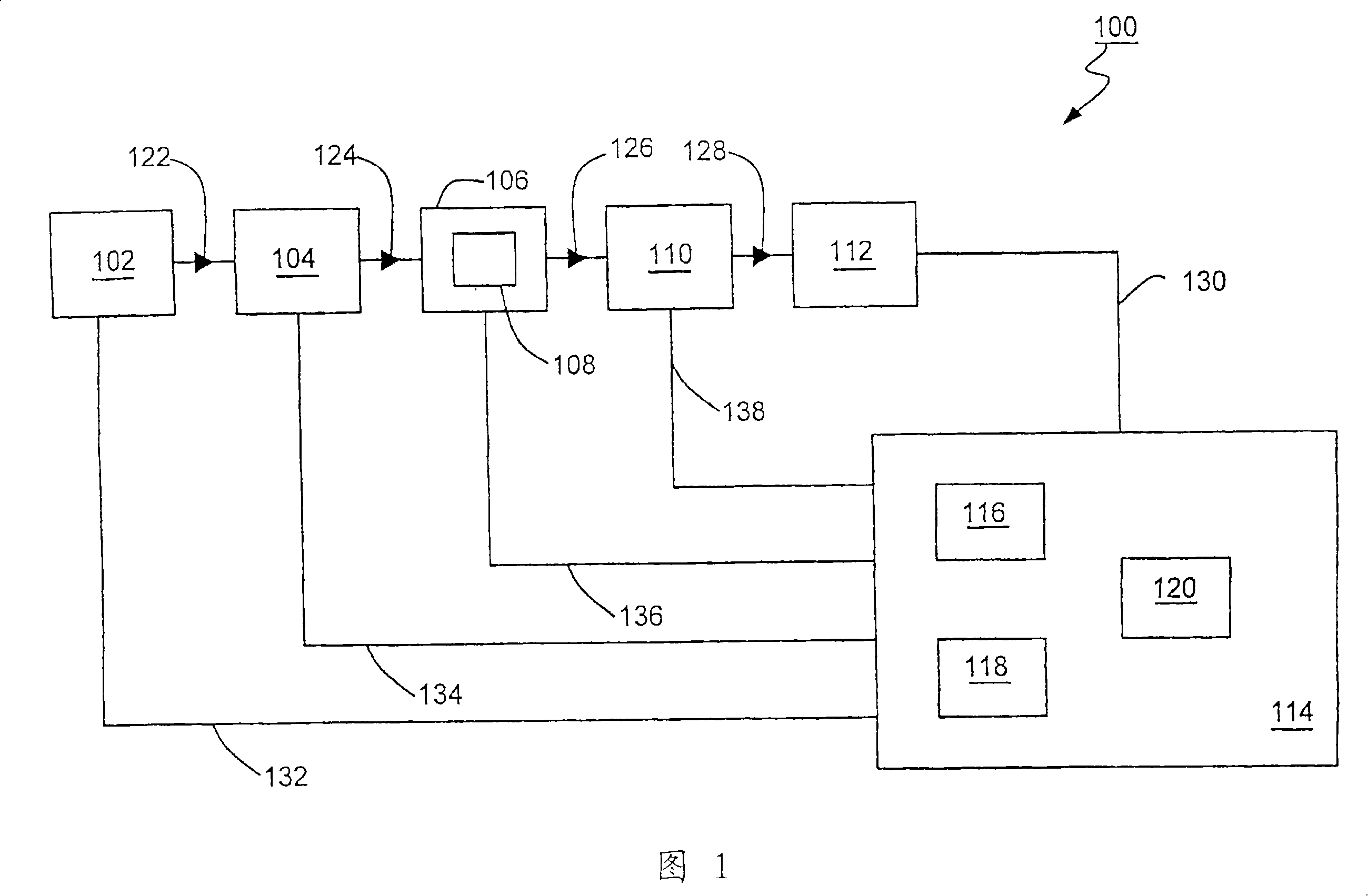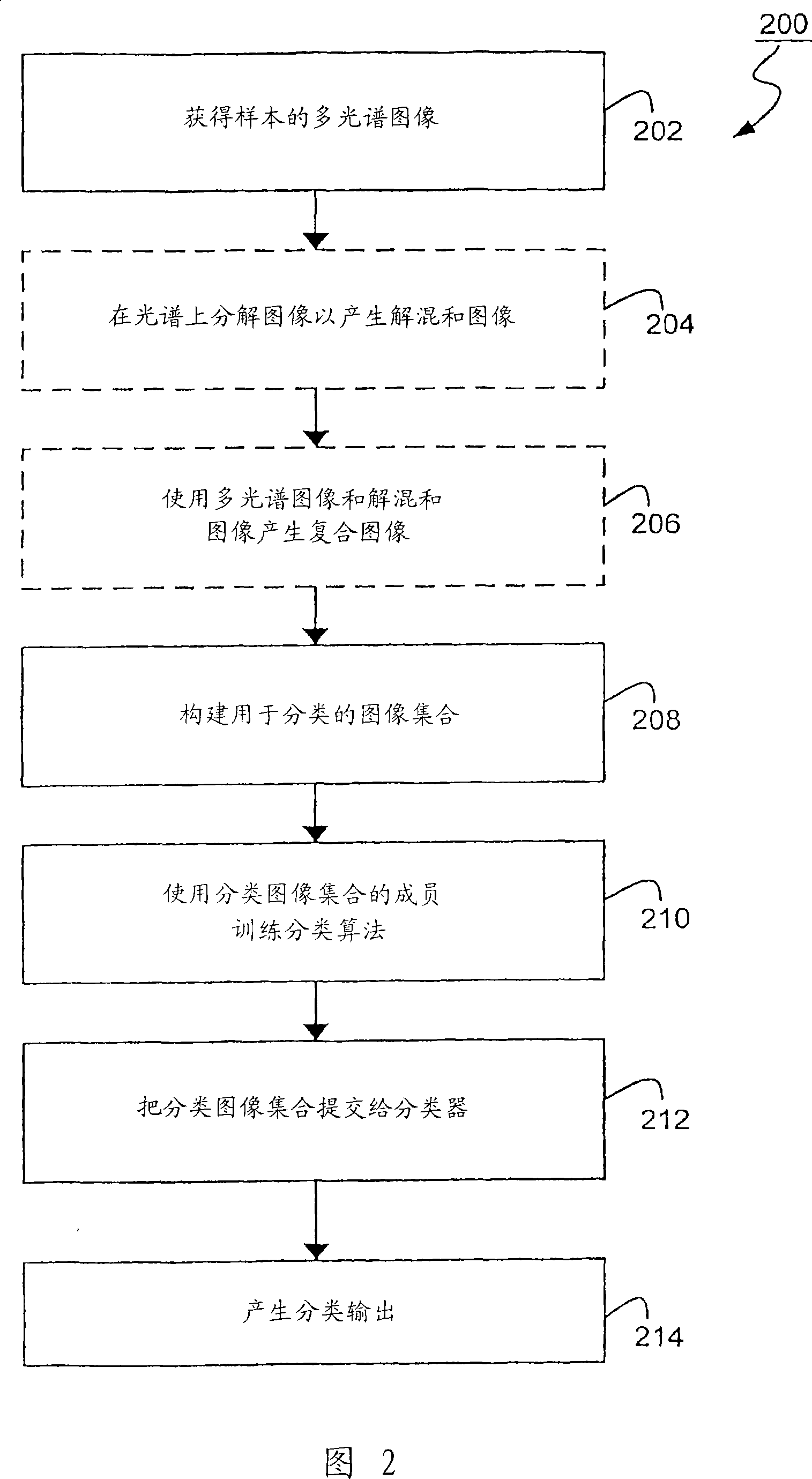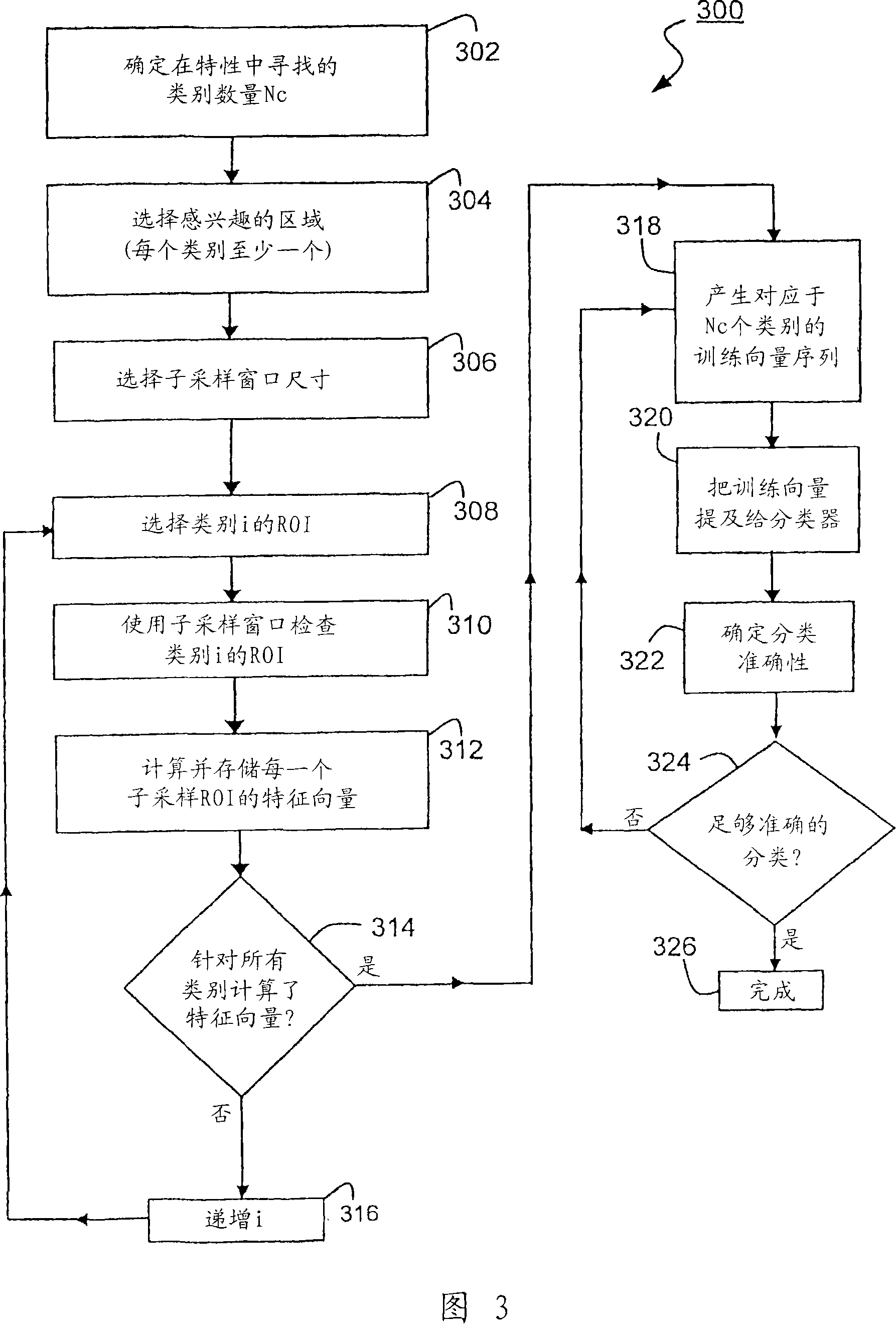Classifying image features
A technology of images and image piles, applied in the directions of instruments, computing, character and pattern recognition, etc.
- Summary
- Abstract
- Description
- Claims
- Application Information
AI Technical Summary
Problems solved by technology
Method used
Image
Examples
Embodiment Construction
[0036] overview
[0037] The methods and systems disclosed herein can be used to classify a wide variety of biological or other samples based on spectral and / or structural features present on images of the samples. The classification method includes at least some steps performed in an automated fashion using machine vision algorithms and techniques. A collection of images of samples is obtained and may be transformed before being submitted to an automatic classifier. Transformation of image sets may include mathematical transformations, such as conversion from intensity to optical density; spectral unmixing and operations, computation of composite images; and formation of classified data sets that may include only a subset of available sample images. The classified data set is then submitted to a machine-based classifier, which can be a neural network or another type of classifier. Image pixels may be classified multiple times, and a final classification is performed based o...
PUM
 Login to View More
Login to View More Abstract
Description
Claims
Application Information
 Login to View More
Login to View More - R&D
- Intellectual Property
- Life Sciences
- Materials
- Tech Scout
- Unparalleled Data Quality
- Higher Quality Content
- 60% Fewer Hallucinations
Browse by: Latest US Patents, China's latest patents, Technical Efficacy Thesaurus, Application Domain, Technology Topic, Popular Technical Reports.
© 2025 PatSnap. All rights reserved.Legal|Privacy policy|Modern Slavery Act Transparency Statement|Sitemap|About US| Contact US: help@patsnap.com



